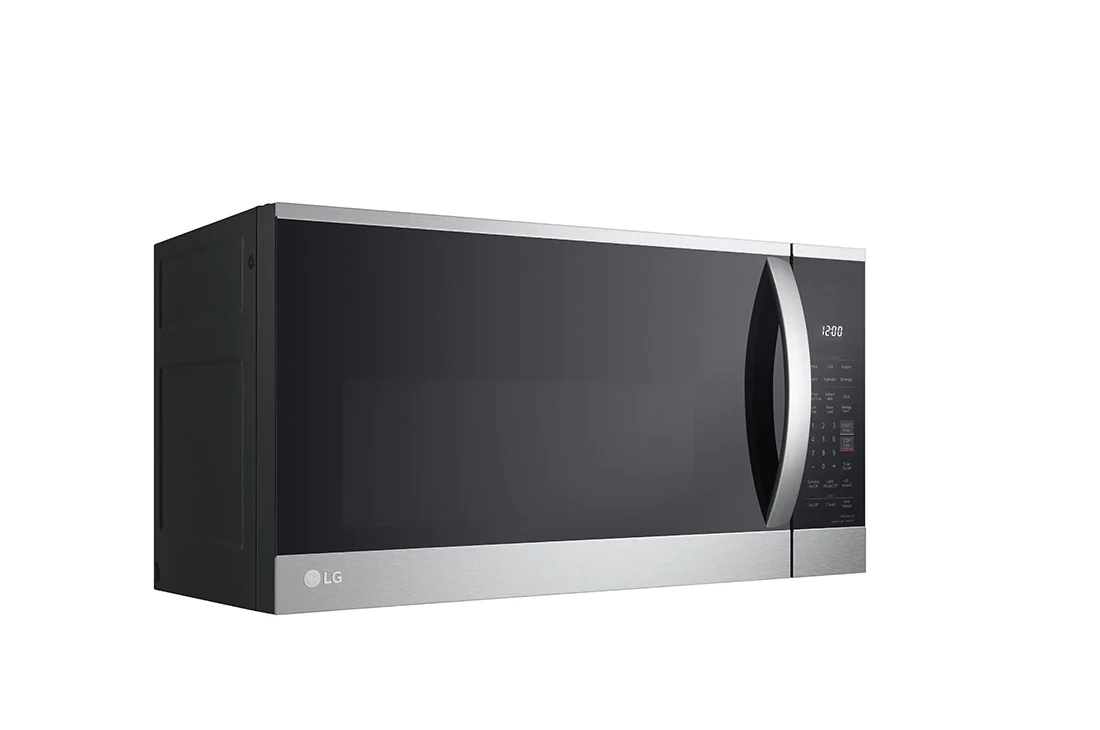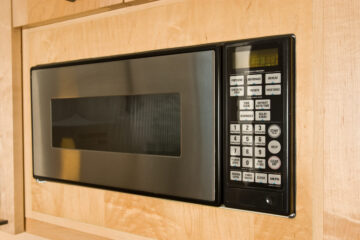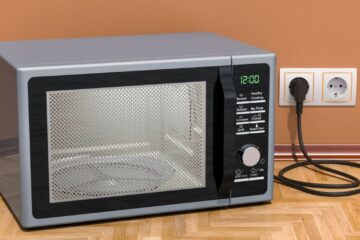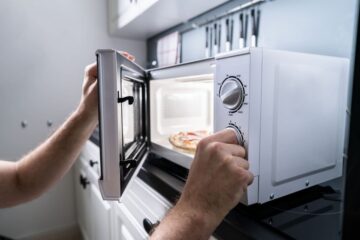When a microwave gets hot on the outside, it can be a cause for concern. While microwaves are designed to contain their heat, there are instances where they can get hot on the outside. This issue is mainly due to thin insulation or faulty heating elements, and it can be dangerous if left unchecked.
One of the most common reasons why a microwave gets hot on the outside is due to extended use or cooking at high heat. When a microwave is used for an extended period, it can cause the appliance to heat up on the outside. Additionally, faulty heating elements can also cause the microwave to get hot on the outside. This can be a safety hazard, as it can lead to fires or damage to the appliance.
If you notice that your microwave is getting hot on the outside, it is important to take action. Checking the insulation and heating elements can help identify the issue and prevent any potential hazards. In this article, we will explore what it means when a microwave gets hot on the outside and provide tips on how to prevent it from happening.
Microwave Basics
Microwave ovens are a common household appliance used for cooking and heating food. They use electromagnetic radiation in the microwave frequency range to heat and cook food. In this section, we will discuss how microwaves work and the different parts of a microwave oven.
How Microwaves Work
Microwaves work by producing electromagnetic waves that are absorbed by the food being cooked. These waves cause the water molecules in the food to vibrate, producing heat that cooks the food. The microwaves are produced by a device called a magnetron, which converts electrical energy into electromagnetic radiation.
The microwaves are then directed into the cooking chamber by a waveguide. The cooking chamber is made of metal and is designed to reflect the microwaves back into the food, ensuring even cooking. The microwaves are absorbed by the food and converted into heat, cooking the food from the inside out.
Microwave Parts
Microwave ovens consist of several different parts that work together to cook food. The main parts of a microwave oven include:
- Magnetron: A device that produces the microwaves used for cooking.
- Waveguide: A metal tube that directs the microwaves from the magnetron into the cooking chamber.
- Cooking Chamber: A metal box that reflects the microwaves back into the food, ensuring even cooking.
- Turntable: A rotating plate that helps to distribute the microwaves evenly throughout the food.
- Control Panel: A set of buttons and displays used to control the microwave oven.
In addition to these main parts, microwave ovens also have several safety features, including a thermal cut-out switch that shuts off the oven if it gets too hot.
Causes of External Heat
Microwaves are designed to contain the heat generated by the cooking process within the food being heated. However, sometimes the exterior of the microwave may become hot, which could be a sign of a malfunction. Here are some of the reasons why a microwave may become hot on the outside.
Overheating Due to Extended Use
Cooking food for an extended period of time can cause heat to transfer to the internal oven walls, floor, and external cabinet. The heat generated by the food being cooked, the oven interior lamp, and the magnetron tube can all contribute to external heat transfer. If the microwave is used for a long time, the exterior may become hot to the touch.
Faulty Components
If the microwave’s heating element is broken or the insulation is too thin, it may become hot on the outside. A microwave oven’s magnetron generates heat waves that bounce against the metal surface and produce enough temperature to warm your food. If the magnetron is damaged, it may cause the microwave to overheat and become hot on the outside.
Improper Ventilation
If the microwave is not properly ventilated, it may become hot on the outside. The ventilation system is designed to remove excess heat from the microwave, but if it is clogged or damaged, it may not be able to do its job effectively. This can cause the microwave to overheat and become hot on the outside.
Potential Hazards
Microwaves are a common household appliance that many people use daily. However, they can pose potential hazards if not used correctly. This section will discuss the hazards associated with microwaves and how to avoid them.
Burns and Fires
Microwaves can cause burns and fires if not used properly. When heating food, the container or food itself can become extremely hot, leading to burns if touched. The exterior of the microwave can also become hot if it is used for an extended period or if there is an issue with the ventilation.
According to the National Fire Protection Association, there is an average of 6,600 fires caused by microwave ovens, with 120 civilian injuries based on 2010 to 2014 annual average data. These fires can be caused by a variety of factors, including overheating, improper use, and faulty wiring.
To prevent burns and fires, it is important to follow the manufacturer’s instructions for use and avoid using containers that are not microwave-safe. Additionally, do not leave the microwave unattended while in use and ensure that it is cleaned regularly to prevent food buildup.
Electrical Shock
Another potential hazard associated with microwaves is electrical shock. This can occur if the microwave is not properly grounded or if there is a problem with the electrical wiring.
To avoid electrical shock, it is important to ensure that the microwave is properly grounded and that the electrical wiring is in good condition. If you suspect an issue with the wiring, do not attempt to repair it yourself. Instead, contact a qualified electrician to assess and repair the problem.
Troubleshooting
If you notice that your microwave is getting too hot on the outside, there are a few things you can do to troubleshoot the issue. Here are some steps you can take to identify the problem and fix it:
Checking for Damage
The first thing you should do is check for any signs of damage to the microwave. Inspect the exterior of the microwave for any cracks, dents, or other damage that could be causing the excessive heat. If you find any damage, it’s best to stop using the microwave immediately and have it repaired by a professional.
Cleaning and Maintenance
If there is no visible damage to the microwave, the next step is to clean and maintain it properly. Over time, food particles and grease can build up inside the microwave, causing it to overheat. To clean the microwave, wipe down the interior with a damp cloth and mild detergent. Be sure to clean the door, door hinge, and where the door connects to the microwave frame. Regular cleaning and maintenance can help prevent overheating and extend the life of your microwave.
Professional Repair
If you’ve checked for damage and cleaned the microwave, but it’s still getting too hot on the outside, it’s time to call in a professional repair technician. Overheating can be caused by a variety of issues, including malfunctioning components or faulty wiring. A professional can diagnose the problem and make the necessary repairs to get your microwave working safely and efficiently again.
Conclusion
In conclusion, a microwave getting hot on the outside can be a cause for concern. It is important to understand the reasons why this may happen and take appropriate action to prevent any potential hazards.
Some common reasons for a microwave getting hot on the outside include a broken heating element, thin insulation, or a blocked air vent. It is recommended to have the microwave checked by a professional if any of these issues are suspected.
Additionally, it is important to use the microwave properly and avoid overuse. Using the microwave too often can cause it to overheat and potentially lead to damage or hazards.
Overall, understanding the causes of a microwave getting hot on the outside and taking appropriate action can help ensure the safety and longevity of the appliance.



